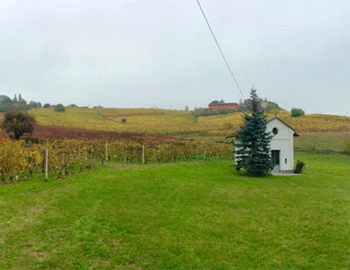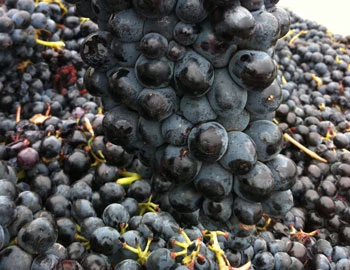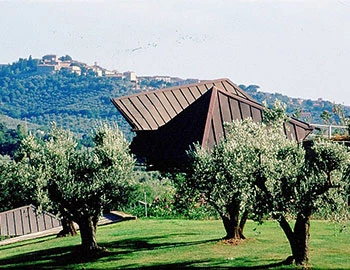Barbera La Cappelletta 2018
Nizza DOCG, Cascina Barisél/Franco Penna, 750 ml

| Grape variety: | Barbera |
| Producer: | Cascina Barisél / Franco Penna |
| Origin: | Italy / Piemont |
Description
A classic, elegant Barbera with a fine wood finish, which gives it the necessary tannin structure and beautifully integrates the juicy acidity. The fragrance palette presents itself with mint, anise and ginger, white pepper, candied cherries and currants as well as violet and rose scents. It ends with a considerable length and a fine hint of cocoa on the palate, with a wonderful fullness of fruit.
Attributes
| Origin: | Italy / Piemont |
| Grape variety: | Barbera |
| Label: | Vegan |
| Ripening potential: | 3 to 8 years |
| Drinking temperature: | 16 to 18 °C |
| Food Pairing: | Brasato di manzo al Barolo, Wild specialities, Wild fowl, Risotto with ceps |
| Vinification: | long must fermentation, soft pressing |
| Harvest: | hand-picking, in small boxes |
| Maturation: | in new barriques |
| Maturation duration: | 16 months |
| Volume: | 15.0 % |
| Note: | Contains sulphites |
Cascina Barisél / Franco Penna
With just 5 hectares, Franco Penna's winery is small but exquisite. The estate near Canelli, east of Alba, comprises only the very best south-facing sites with calcareous soils. Franco's father Enrico, who bought the estate in the 1960s, obviously knew what he was doing.
Practically half of the vineyard is planted with Moscato bianco. One hectare is dedicated to Barbera, from which La Cappelletta is made, and the remaining land planted with Dolcetto and Favorita. In recent years, Franco Penna, like so many other winemakers, has adapted his winegrowing and increasingly relies on organic methods. The vineyards around Canelli are among the most valuable in Piedmont, especially because of the fragrant, finely sparkling Moscato d'Asti. Franco Penna is committed to keeping these soils alive through the appropriate cultivation.

Barbera
The all-around culinary companion
The Barbera grape is one of the cornerstones of the Piedmont. It lends its name to three cultivation areas: Barbera d’Asti, Barbera d’Alba and Barbera di Monferrato. There are fierce rivalries. Thus the vintners of Asti assert that their Barbera is better than those from Alba, because the best sites in Alba are reserved for Barolo and Barberesco. The truth is, there are all kinds of Barbera: young and fruity, ripe and complex, simple or sophisticated. The best representatives are ruby red with pure, sweet cherry fruit, soft body and fresh acidity. They are fantastic culinary companions: there is scarcely any Italian dish with which they do not fit. The variety is well-distributed, thanks to the Italian emigrants in California.

Italy
Italy – Where wine is a way of life
The Italian wine regions are extremely diverse, and this is made clear in their wines. Established varieties such as Merlot, Syrah, and Sauvignon can be found on just 15 percent of the total vine growing area. The remaining 85 percent is reserved for autochthonous, indigenous varieties. More than 2,000 different grape varieties are grown under diverse conditions and pressed with various techniques into wines that reach the top tier of the international wine market.



